[MCWG] Molecular Connectivity Newsletter: October 2024
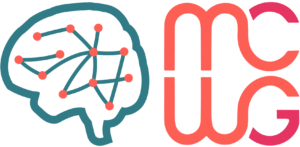
Hello!
We are excited to begin our 2024-2025 Molecular Connectivity Online Series, MCOS… again! We are very sorry for any convenience that may have arisen last month as we had to move the first talk of the season to October!
And so, without further ado, please join us on Friday October 18th, 2024, 15:00 CEST, 9:00 EDT for our MCOS with Igor Yakushev, MD, who will discuss findings related to test-retest reproducibility of structural, functional and molecular estimates of brain connectivity at rest.
Also, we are pleased to share that our educational course and symposium for OHBM2024 are now online! Please find the educational course here and symposium here.
Please find further details and registration link for MCOS below!
We are pleased to announce the next MCOS talk featuring Igor Yakushev, MD!
Date: October 18th, 2024
Time: 15:00 CET, 9:00 EST
Title: Test-retest reproducibility of structural and proxy estimates of brain connectivity at rest
Please join us for this 30 minute presentation to be followed by discussion (~25 minutes).
Please register here.
Abstract: While structural connectivity (SC) is indicative of actual anatomical connectivity and derived at a single subject level, proxy estimates of brain connectivity such as functional connectivity (FC) from functional magnetic resonance imaging (MRI), intersubject covariance of regional gray matter volume (GMVcov) from structural MRI, and intersubject covariance of regional 18F-fluorodeoxyglucose uptake (FDGcov) from positron emission tomography are derived from statistical dependencies between regional measurements. To understand, in how far these estimates are able to capture physiological and pathological changes in brain connectivity, knowledge on their reproducibility is essential. In this study, we determined reproducibility of group level SC, FC, GMVcov, and FDGcov in the same 55 healthy subjects at rest using a simultaneous PET/MRI acquisition protocol. Reproducibility was determined using Spearman’s correlation coefficient, coefficient of variation, and proportion of repeatedly (test and retest) present connections.
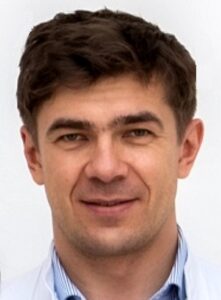
Igor Yakushev obtained his MD in 2010 from the University of Mainz, Germany. In 2012, after residency in Psychiatry and Neurology, he moved to Munich for residency in Nuclear Medicine at the Technical University of Munich (TUM), Germany. Since 2013 he has led the research group “Multimodal imaging of normal and pathological cognition”. Since 2015 he is the Head of Neuroimaging, since 2018 Senior Consultant in Nuclear Medicine at the Dept. of Nuclear Medicine, TUM. He is an Associate Faculty at the Munich Center for NeuroSciences “Brain and Mind”. Igor Yakushev has served in the Board of Directors of the Brain Imaging Council, Society of Nuclear Medicine and Molecular Imaging, as well as in the Neuroimaging Committee, European Association of Nuclear Medicine. His research is focused on mechanisms of brain connectivity and development of imaging-based biomarkers for neurodegenerative and neuro-oncological disorders.
You can find more about Igor here!
The MCOS promotes rigor in research and resource sharing. We aim to hold MCOS every third Friday of the month, subject to change due to speaker availability.
The following MCOS seminar will be held on Friday, November 22nd, 2024, and please note a change in time as it will be held at 22:00 AEST, 14:00 CET, 8:00 EST
Hamish Deery (University of Monash, Australia) will discuss “Metabolic connectivity in ageing”
Please stay tuned for reminders on social media!
We are excited to announce MCWG members will hold a Round Table at the 37th Annual Congress of the European Association of Nuclear Medicine (EANM), Hamburg, Germany October 19-23, 2024
Date: Monday October 21th, 2024
Time: 09:45 – 11:15 CET
Title: Round Table: Molecular Imaging of Brain Connectivity
Moderators: Silvia Morbelli (Turin, Italy) Igor Yakushev (Munich, Germany)
Arianna Sala (Liege, Belgium): Brain PET imaging 2.0: how can molecular imaging capture brain connectivity?
Alexander Drzezga (Cologne, Germany): Disease-specific patterns of brain dysconnectivity
Jorge Sepulcre (New Haven, United States of America): Establishing causal spreading of tau and amyloid with molecular imaging
More information can be found here.
Please visit MCWG members and colleagues who are presenting:
Silvia Paola Caminiti, Débora E. Peretti and Chunmeng Tang
Anna Lisa Martini, Giulia Carli, Silvia Paola Caminiti, Lorenzo Kiferle, Andrea Leo, Daniela Perani, Stelvio Sestini
Title: Brain metabolic connectivity and neurological symptoms persistence in Long-COVID
Presentation Number: OP-307 (TROP Session: Inflammation & Infection Committee: Top on Inflammation and Infection Imaging)
Time and location: Monday, October 21, 2024 8:00:00 AM – 9:30:00 AM, Hall Y10-Y12
Topic: This study delves into brain metabolic connectivity of SARS-CoV-2 survivors from acute-subacute to chronic phase aiming to shed light on the mechanisms underlying the persistence of neurological symptoms in long-COVID patients.
Débora E. Peretti, Sanne K. Meles, David Vállez García, Giulia Carli, Hans J. Van der Horn, Klaus L. Leenders, Remco J. Renken
Title: Open-source MATLAB code for the identification of spatial covariance patterns in neuroimaging data
Poster: EP-0764 (Session EP-51)
Date and time: The poster will be accessible throughout the conference at the e-poster area
Topic: An open-source SSM/PCA software easy to apply to difference radiotracers and disorders.
Chunmeng Tang, Michel Koole, Koen Van Laere, Philip Van Damme, Joke De Vocht
Title: Support Vector Machine Classification of 18F-FDG PET Scans in ALS Patients with and without C9orf72 Mutations versus Controls.
Presentation Number: OP-857 (Session: 1805 Cutting Edge Science Track – TROP Session: Physics Committee: Data Analysis: Neuro & Cardio)
Time and location: Wednesday, 23/10, 9:45:00 AM – 11:15:00 AM, Hall Y4-Y9
Topic: The classification between C9-ALS and sALS achieved accuracies higher than 70% for both classes, showing that the pattern of brain involvement in C9-ALS considerably differs from sALS.
The MCWG Outreach Council invites you to submit information about papers, conferences, presentations or other events or news related to brain and molecular connectivity as well as any job opportunities that you wish to share with the community!
Please share for consideration by the final day of each month using this form.
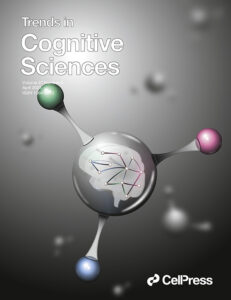
The MCWG is made up of four international and multidisciplinary councils dedicated to promoting molecular connectivity research via dissemination of methods, results, collaboration, and resource sharing (e.g. datasets, tools) within the scientific community. We encourage the neuroscientific community to take an integrative perspective in study of the brain connectome, where various methods including MRI-based techniques, electrophysiological tools, and molecular imaging advance our understanding of the brain. Please find fundamental questions outlined here: “Brain connectomics: time for a molecular imaging perspective?”
Our website can be found here. We also invite you to join the MCWG!
[MCWG] Molecular Connectivity Newsletter: September 2024

Guess who’s back!!!
We hope that you have had a safe and restful summer! We are excited to resume our monthly newsletter for the academic year! We are also resuming our Molecular Connectivity Online Series, MCOS!
Thank you to everyone who attended the June MCOS with Tommaso Volpi, PhD, the recording from his talk can be found here and slides here.
Please stay tuned for further announcements as well as links to recordings from MCOS talks and last year’s Symposium coming soon!
Please join us on Friday September 20th, 2024, 15:00 CEST, 9:00 EDT for our MCOS with Igor Yakushev, MD, who will discuss findings related to test-retest reproducibility of structural, functional and molecular estimates of brain connectivity at rest.
Please find further details and registration information below!
We are pleased to announce the next MCOS talk featuring Igor Yakushev, PhD!
Date: September 20th, 2024
Time: 15:00 CET, 9:00 EST
Title: Test-retest reproducibility of structural and proxy estimates of brain connectivity at rest
Please join us for this 30 minute presentation to be followed by discussion (~25 minutes).
Please register here.
Abstract: While structural connectivity (SC) is indicative of actual anatomical connectivity and derived at a single subject level, proxy estimates of brain connectivity such as functional connectivity (FC) from functional magnetic resonance imaging (MRI), intersubject covariance of regional gray matter volume (GMVcov) from structural MRI, and intersubject covariance of regional 18F-fluorodeoxyglucose uptake (FDGcov) from positron emission tomography are derived from statistical dependencies between regional measurements. To understand, in how far these estimates are able to capture physiological and pathological changes in brain connectivity, knowledge on their reproducibility is essential. In this study, we determined reproducibility of group level SC, FC, GMVcov, and FDGcov in the same 55 healthy subjects at rest using a simultaneous PET/MRI acquisition protocol. Reproducibility was determined using Spearman’s correlation coefficient, coefficient of variation, and proportion of repeatedly (test and retest) present connections.

Igor Yakushev obtained his MD in 2010 from the University of Mainz, Germany. In 2012, after residency in Psychiatry and Neurology, he moved to Munich for residency in Nuclear Medicine at the Technical University of Munich (TUM), Germany. Since 2013 he has led the research group “Multimodal imaging of normal and pathological cognition”. Since 2015 he is the Head of Neuroimaging, since 2018 Senior Consultant in Nuclear Medicine at the Dept. of Nuclear Medicine, TUM. He is an Associate Faculty at the Munich Center for NeuroSciences “Brain and Mind”. Igor Yakushev has served in the Board of Directors of the Brain Imaging Council, Society of Nuclear Medicine and Molecular Imaging, as well as in the Neuroimaging Committee, European Association of Nuclear Medicine. His research is focused on mechanisms of brain connectivity and development of imaging-based biomarkers for neurodegenerative and neuro-oncological disorders.
You can find more about Igor here!
The MCOS promotes rigor in research and resource sharing. We aim to hold MCOS every third Friday of the month, subject to change due to speaker availability.
The following MCOS seminar will be held on Friday, October 18th, 2024, 15:00 CEST, 9:00 EDT
Mary C. Catanese, PhD (Department of Psychiatry, Massachusetts General Hospital, Harvard Medical School, USA) will discuss “Epigenetic alterations in white matter with age: impacts on structural connectivity and beyond”
The subsequent MCOS will be held on Friday, November 22nd, 2024, and please note a change in time as it will be held at 22:00 AEST, 14:00 CET, 8:00 EST
Hamish Deery (University of Monash, Australia) will discuss “Metabolic connectivity in ageing”
Please visit us on social media and stay tuned for further details!
The MCWG Outreach Council invites you to submit information about papers, conferences, presentations or other events or news related to brain and molecular connectivity as well as any job opportunities that you wish to share with the community!
Please share for consideration by the final day of each month using this form.

The MCWG is made up of four international and multidisciplinary councils dedicated to promoting molecular connectivity research via dissemination of methods, results, collaboration, and resource sharing (e.g. datasets, tools) within the scientific community. We encourage the neuroscientific community to take an integrative perspective in study of the brain connectome, where various methods including MRI-based techniques, electrophysiological tools, and molecular imaging advance our understanding of the brain. Please find fundamental questions outlined here: “Brain connectomics: time for a molecular imaging perspective?”
Our website can be found here. We also invite you to join the MCWG!
[MCWG] Molecular Connectivity Newsletter: June 2024

Hello!
Many thanks to all who participated in our Molecular Connectivity Symposium, “What is brain connectivity?” ! We wish to thank our generous sponsors, DFG, Bruker (PMOD), Curium and Technical University of Munich!

After the excellent talks and discussions at the Symposium, we have set a foundation for a forthcoming nomenclature consensus paper, stay tuned!
Also after the success of the symposium in Munich, we continue our discussions online with the Molecular Connectivity Online Series (MCOS)! Thanks to all who attended the May MCOS with Joana Pereira, PhD!
Please join us for our final MCOS of the season in June, featuring Tommaso Volpi, PhD! Please find details and registration information below!
We are also sharing details about MCWG-related events at the upcoming OHBM Meeting, with information about talks as well as posters from within and outside of MCWG in areas related to molecular questions and brain connectivity. We hope to see you at MCOS and at OHBM, in Seoul, Korea!
As a final note, the newsletter will be quiet for the next few months for a summer hiatus and will return in the fall! Please stay tuned for announcements as well as links to recordings from the Symposium coming in September!
We hope everyone has a safe and restful summer!
We are pleased to announce the next MCOS talk featuring Tommaso Volpi, PhD!
Date: June 14th, 2024
Time: 15:00 CET, 9:00 EST
Title: Molecular connectivity & dynamic PET: comparing time series and subject series approaches
Please join us for this 30 minute presentation to be followed by discussion (~25 minutes).
Please register here.
Dynamic PET acquisitions allow individuals to obtain individual estimates of molecular connectivity (MC) from time series data – similarly to fMRI functional connectivity. In this talk, focusing on [18F]FDG as a representative tracer, I will discuss
Much of this content is included in our 2023 JCBFM paper.

Dr. Tommaso Volpi is currently a Postdoctoral Associate at the Department of Radiology at Yale University, under the supervision of Prof. Richard Carson. He obtained his Ph.D. in 2023 from the University of Padova, Italy, with a thesis on the complex coupling between [18F]FDG PET measures of brain glucose metabolism and fMRI proxies of spontaneous activity, including the comparison of metabolic and functional connectivity. His main current projects concern methods for PET kinetic modeling and noninvasive input function estimation to obtain physiologically informative parameters, and the integration of PET- and MRI-derived features to understand brain function and connectivity in health and disease (Parkinson’s disease, epilepsy, gliomas). He is a member of the Validation Council of the MCWG.
You can find more about Tommaso here!
The MCOS promotes rigor in research and resource sharing. We aim to hold MCOS every third Friday of the month, but is subject to change due to speaker availability.
The next MCOS seminar will be held in September, 2024!
Please watch our social media and stay tuned for further details!
1. OHBM 2024 will feature an educational course organized by members of the MCWG:
Molecular Imaging: a Hands-on Tutorial based on Open Access Datasets
Date: June 23 2024
Time: 1:30 PM – 5:30 PM
Room: Grand Ballroom 105
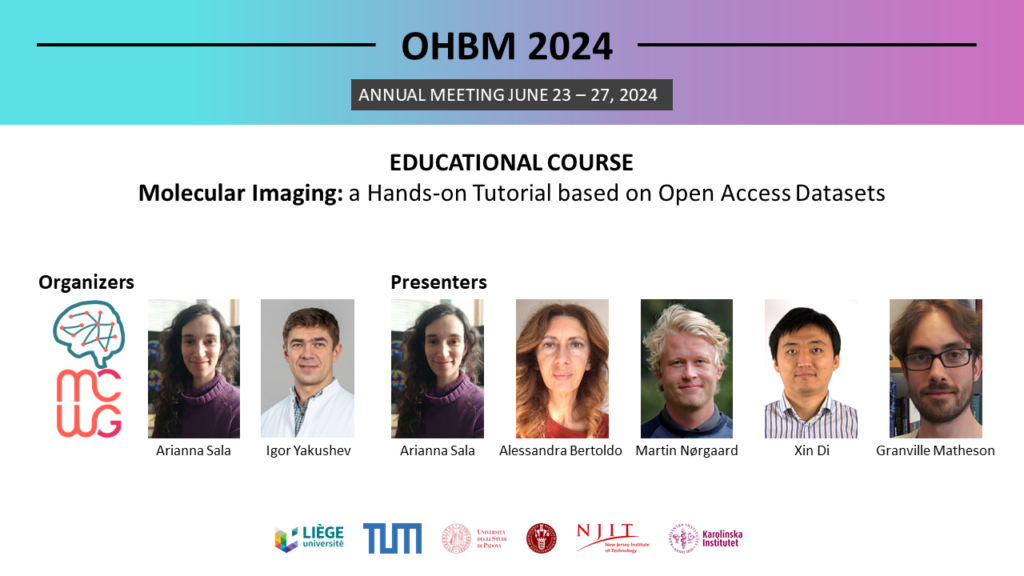
Organized by Arianna Sala and Igor Yakushev, the educational course will feature presentations from Arianna Sala, Alessandra Bertoldo, Martin Nørgaard, Xin Di and Granville Matheson. This Educational Course aims to provide a basic introduction to molecular imaging, covering its basic principles and main tools, illustrating similarities and critical differences in the main molecular measures commonly encountered in open access/easily accessible molecular datasets. Different hands-on, interactive sessions will allow the attendees to get first-hand experience on data access, processing and modelling of different types of molecular imaging data. The target audience for this educational course are researchers in the field of neuroimaging of all levels of expertise, wishing to expand their knowledge.
Presentations:
For further information about the Educational course, please see here.
2. OHBM 2024 will also feature a symposium organized by members of the MCWG:
Brain connectivity: Ready for clinical applications?
An overview of current challenges and caveats
Date: June 24 2024
Time: 8:00 AM – 9:15 AM
Room: Grand Ballroom 103
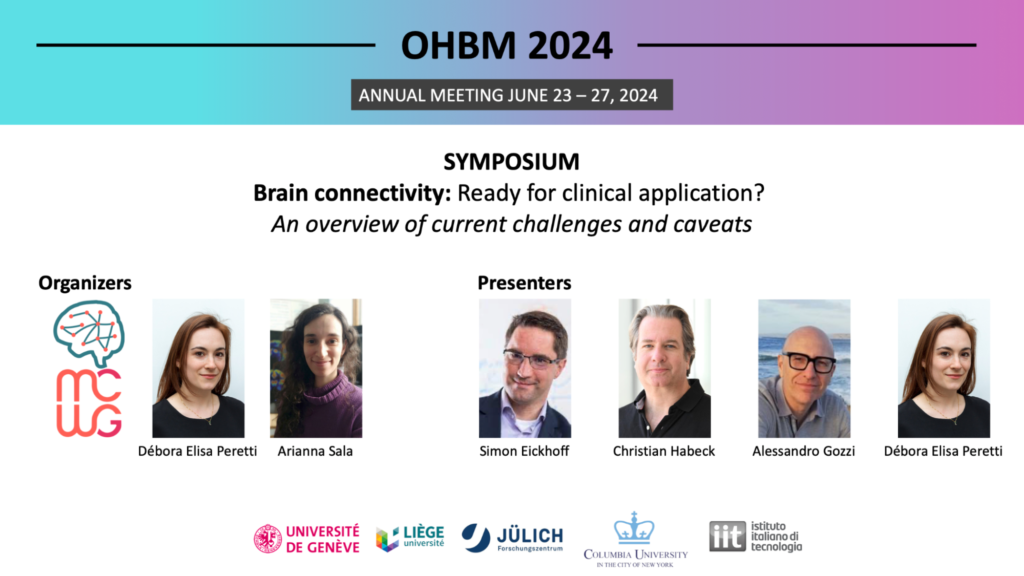
Organized by Débora Peretti and Arianna Sala, the symposium is entitled “Brain connectivity: ready for clinical application? An overview of current challenges and caveats” and will feature presentations from Simon Eickhoff, Christian Habeck, Alessandro Gozzi, and Débora Peretti. In this symposium we discuss some of the most pressing methodological considerations that still need to be addressed by neuroscientists in order to obtain robust connectivity markers for inference and prediction. Both statistical and biological considerations will be covered, on the grounds that not only prediction of phenotypes from activation/connectivity data, but also understanding the mechanisms underlying inter-individual connectivity differences, are necessary to obtain robust, generalizable topographic substrates. Finally, an overview of the translation of connectivity metrics into clinical practice will be presented.
Presentations:
For further information about the Symposium, please see here.
3. MCWG Member Posters at OHBM
Débora Peretti, Cecilia Boccalini, Max Scheffler, Cristelle Rodriguez, Marie Montandon, Sven Haller, Panteleimon Giannakopoulos, Giovanni B. Frisoni, Valentina Garibotto
Title: Brain Connectivity Measured Through Spatial Covariance as a Biomarker for Neurodegeneration in AD
Poster number: 252
Date and time: June 24th, 01:15 – 03:15 PM, and June 25th 02:00 – 04:00 PM
Topic: Spatial covariance maps provide a strong and specific marker for AD, outperforming conventional metrics to assess neurodegeneration.
Amritha Harikumar, Maria Misiura, Daniel Amen, David Keator, Vince Calhoun
Title: SPECT brain networks and their functional connectivity in schizophrenia patients vs controls.
Poster number: 661
Date and time: June 24th, 2024: 01:15 PM – 03:15 PM and June 25th, 2024: 02:00 PM – 04:00 PM
Topic: Here we utilize SPECT data to compare group differences in patients with schizophrenia and healthy controls using fully automated, spatially constrained ICA (i.e., the Neuromark pipeline). We evaluate both the spatial regions as well as the whole brain SPECT connectome (assessed as covariation among subjects) to evaluate the neuroimaging links to schizophrenia
Giulia Vallini, Giorgia Baron, Giulia Pagnin, John J. Lee, Andrei G. Vlassenko, Manu S. Goyal, Diego Cecchin, Maurizio Corbetta, Alessandra Bertoldo
Title: Whole-brain metabolic-effective coupling in healthy controls and its disruption in gliomas.
Poster number: 2492
Date and time: June 26th, 2024: 12:45 PM – 14:45 PM and June 27th, 2024: 12:45 PM – 14:45 PM
Topic: In our study, a dual metabolic-functional association emerges: one at the local level (glucose uptake-nodal signal directionality) and one at the network level (metabolic connectivity-partial covariance). Furthermore, our study reveals how these two distinct decouplings can differentiate glioma patients based on lesion location – with local disruptions observed only for temporo-parietal lesions and network alterations for frontal lesions – providing new insights into the pathophysiology and metabolic-kinetic linkage of glioma
4. Molecular Connectivity Related Posters at OHBM
Penghui Du, Sean Coursey, Ting Xu, Hsiao-Ying Wey, Jonathan Polimeni, Quanying Liu, Jingyuan Chen
Title: Human Cerebral Cortex Organization Estimated by Functional PET-FDG “Metabolic Connectivity”
Poster number: 1496
Date and time: June 26, 2024: 01:45 PM – 03:45 PM and June 27, 2024: 01:45 PM – 03:45 PM
Topic: In this study, we applied a connectivity gradient-based analytical scheme on a resting-state simultaneous fPET-fMRI dataset, aiming to characterize the detailed cortical organization of fPET-derived MC and understand how it differs from the fMRI-derived functional network structures.
Fernando Bravo, Sabrina Haas, Tudor Ionescu, Irene Gonzalez-Menendez, Leticia Quintanilla-Martinez, Gina Dunkel, Laura Kuebler, Bettina Weigelin, Gerald Reischl, Bernd Pichler, Kristina Herfert
Title: Simultaneous fPET/fMRI unveils nigrostriatal pathway mechanisms during optogenetic stimulation.
Poster number: 2397
Date and time: June 26, 2024: 01:45 PM – 03:45 PM and June 27, 2024: 01:45 PM – 03:45 PM
Topic: In this study, the use of simultaneous [18F]FDG-fPET/BOLD-fMRI allowed us to demonstrate excitation-inhibition mechanisms of the nigrostriatal pathway during optogenetic stimulation, which are concealed in isolated fMRI readouts.
We invite you to please send information about events related to brain and molecular connectivity or news or job opportunities that you wish to share with the community for consideration by the final day of each month using this form.
The Functional Neuroimaging Laboratory has a postdoctoral position (up to 6 years, internationally competitive salary) aimed at understanding the biological basis of brain connectivity by implementing multimodal optical imaging and functional neuroimaging in the mouse – maybe of interest for member PhD students: https://www.fens.org/careers/job-market/job/118960
This position is part of a newly funded research program that is launching to understand how brain-wide networks respond to internal and external modulation. The lab (www.fnimg.iit.it) is a supportive and collaborative environment, and this project is part of a larger program with opportunities for future collaboration and growth. The lab expects to have multiple new openings soon (including 1 data analyst, 3 postdocs and 1 PhD student) in the coming weeks, so please stay tuned.
The MCWG Outreach Council invites you to submit information about papers, conferences, presentations or other events or news related to brain and molecular connectivity or job opportunities that you wish to share with the community for consideration by the final day of each month using this form.

The MCWG is made up of four international and multidisciplinary councils dedicated to promoting molecular connectivity research via dissemination of methods, results, collaboration, and resource sharing (e.g. datasets, tools) within the scientific community. We encourage the neuroscientific community to take an integrative perspective in study of the brain connectome, where various methods including MRI-based techniques, electrophysiological tools, and molecular imaging advance our understanding of the brain. Please find fundamental questions outlined here: “Brain connectomics: time for a molecular imaging perspective?”
Our website can be found here. We also invite you to join the MCWG!
[MCWG] Molecular Connectivity Newsletter: May 2024

Hello!
We wish to remind everyone that registration for the Molecular Connectivity Symposium, “What is brain connectivity?” is still open for online participation with ten spots available! The registration link can be found here, with more information below! We wish to ensure that everyone who is interested in attending online has the opportunity to attend and look forward to “seeing” you there! Also, please join us for our May MCOS with Dr. Joana Pereira, on Friday, May 17th, 15:00 CET, 9:00 EST, further details and registration link below!
1. The MCWG second Symposium “What is brain connectivity?” is this Friday May 3rd!
We hope you will join us!
Please note, there are 10 available spots remaining for online participation!
Registration: Registration for this symposium is free! Secure your spot by visiting here.
The symposium aims to better delineate macroscale brain connectivity across fMRI, DWI, EEG, and molecular connectivity. The event will provide a foundation for follow-up discussions about standardized nomenclature for molecular connectivity.
🌐 Please join Us!
Date: May 3, 2024
Time: 9:00 am – 1:00 pm (GMT+2, time converter: here)
We are also offering Special Access for Molecular Connectivity Members continuing through May the 4th: “Molecular Imaging of Brain Connectivity: towards standardized nomenclature” reserved for MCWG members and experts.
This event is organized with the support of DFG, Bruker (PMOD), Curium and Technical University of Munich.
2. We are pleased to announce the next MCOS talk featuring Joana Pereira, PhD!
Date: May 17th, 2024
Time: 15:00 CET, 9:00 EST
Title: Individual PET connectomes capture disease progression and cognitive decline in Alzheimer’s disease
Please join us for this 30 minute presentation to be followed by discussion (~25 minutes).
Please register here.
Identifying unique differences is crucial for enhancing personalized medicine strategies for Alzheimer’s disease (AD). In this work, we present a framework to create individual molecular connectomes by using longitudinal data from tau and amyloid positron emission tomography scans. We show that these personalized molecular connectomes can pinpoint specific individuals and track disease progression throughout different AD stages as well as over time.

I have a background in neuroimaging in aging and neurodegenerative diseases, mainly Alzheimer’s disease (AD). In my group we are working with different brain imaging modalities, CSF and plasma biomarkers to understand the sequence of pathological events that lead to AD. We have developed different methods, including an open-access software for the analysis of brain connectivity using graph theory, multilayer network approaches and deep learning called BRAPH.
The MCOS promotes rigor in research and resource sharing. We aim to hold MCOS every third Friday of the month, but is subject to change due to speaker availability.
Our next seminar will be held on Friday June 14th, 2024 at 15:00 CET, 9:00am EST featuring Tommaso Volpi, PhD who will discuss Molecular connectivity & dynamic PET: comparing time series and subject series approaches.
Please stay tuned for further details in next month’s newsletter!
Reminder, OHBM 2024 will feature a symposium organized by members of the MCWG:
Brain connectivity: Ready for clinical applications?
Date: June 24 2024
Time: 8:00 AM – 9:15 AM

Organized by Débora Peretti and Arianna Sala, the symposium is entitled “Brain connectivity: ready for clinical application? An overview of current challenges and caveats” and will feature presentations from Simon Eickhoff, Christian Habeck, Alessandro Gozzi, and Débora Peretti. In this symposium we discuss some of the most pressing methodological considerations that still need to be addressed by neuroscientists in order to obtain robust connectivity markers for inference and prediction. Both statistical and biological considerations will be covered, on the grounds that not only prediction of phenotypes from activation/connectivity data, but also understanding the mechanisms underlying inter-individual connectivity differences, are necessary to obtain robust, generalizable topographic substrates. Finally, an overview of the translation of connectivity metrics into clinical practice will be presented.
We invite you to please send information about events related to brain and molecular connectivity or news or job opportunities that you wish to share with the community for consideration by the final day of each month using this form.
We will feature a member of the MCWG and include a brief Q&A, stay tuned for next month’s feature!

The MCWG is made up of four international and multidisciplinary councils dedicated to promoting molecular connectivity research via dissemination of methods, results, collaboration, and resource sharing (e.g. datasets, tools) within the scientific community. We encourage the neuroscientific community to take an integrative perspective in study of the brain connectome, where various methods including MRI-based techniques, electrophysiological tools, and molecular imaging advance our understanding of the brain. Please find fundamental questions outlined here: “Brain connectomics: time for a molecular imaging perspective?”
Our website can be found here. We also invite you to join the MCWG!
[MCWG] Molecular Connectivity Newsletter: April 2024

Greetings!
Thanks to everyone in attendance at our MCOS in March with Vince Calhoun, PhD! Please find the recording here and the slides here. We welcome any feedback and hope to see you at our April MCOS seminar with Simon Eickhoff, PhD, next Friday 19 April! Time and registration information is below!
In this newsletter:
We are pleased to announce the fourth MCOS talk featuring Simon Eickhoff, PhD!
Date: April 19th, 2024
Time: 15:00 CET, 9:00 EST
Title: The many faces of brain connectivity
Please join us for this 30 minute presentation to be followed by discussion (~25 minutes).
Please register here.
Regional segregation and long-range integration are the two fundamental principles of brain organization. As connectivity patterns play a major role in both of these, assessing the the connectome has emerged as a key avenue towards a better understanding of the brain. Key to this presentation is the notion that there is no such thing as “the” connectivity between two brain regions, but rather different concepts, facets and assessment of brain connectivity may provide corroborating, complementary or conflicting evidence. Therefore, a better understanding of the relationship between connectivity-types and their integration to a more holistic view of long-range interactions should be critical to avoid an undue reliance on individual approaches that may actually hinder progress in neurobiological understanding.
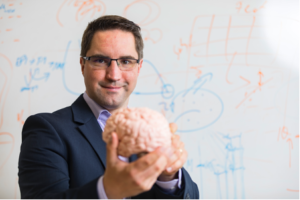
Simon Eickhoff is a full professor and chair of the Institute for Systems Neuroscience at the Heinrich-Heine University in Düsseldorf and the director of the Institute of Neuroscience and Medicine (INM-7, Brain and Behavior) at the Forschungszentrum Jülich. He is furthermore a visiting professor at the Chinese Academy of Science Institute of Automation. Working at the interface between neuroanatomy, data-science and brain medicine, he aims to obtain a more detailed characterization of the organization of the human brain and its inter-individual variability in order to better understand its changes in advanced age as well as neurological and psychiatric disorders. This goal is pursued by the development and application of novel analysis tools and approaches for large-scale, multi-modal analysis of brain structure, function and connectivity as well as by machine-learning for single subject prediction of cognitive and socio-affective traits and ultimately precision medicine.
The MCOS promotes rigor in research and resource sharing. We aim to hold MCOS every third Friday of the month, but is subject to change due to speaker availability.
Our next seminar will be held on Friday May 17th, 2024 at 15:00 CET, 9:00am EST featuring Joana Pereira, PhD who will discuss her work on brain connectivity in Alzheimer’s Disease.
Stay tuned for details in next month’s newsletter!
1. MCWG symposium
We are pleased to remind you that the second MCWG symposium:
“What is Brain Connectivity?”
will be held in Munich on 3 May (9:00 am – 1:00 pm CEST).
Registration for this hybrid event is free but only a few places are left, so don’t miss out on this opportunity !
🚨 Important information : Registration for in-person attendance will close on April 14th.
You can secure your spot by registering here.
During this event, international speakers will delve into the fascinating world of brain connectivity. Our program promises enlightening discussions and valuable insights from experts in the fields of fMRI, DWI, EEG, and molecular imaging.
This symposium will be followed by Sessions reserved to MCWG members and experts dedicated to “Molecular Imaging of Brain Connectivity: towards standardized nomenclature“ (📅 May 3-4).
🌐 Programme and info: tinyurl.com/MCWGMunich2024
We look forward to welcoming you to our symposium and exploring the exciting world of brain connectivity together!
2. We are very pleased to announce that OHBM 2024 will feature a symposium organized by members of the MCWG!
Date: June 24 2024
Time: 8:00 AM – 9:15 AM
Title: Brain connectivity: Ready for clinical applications? An overview of current challenges and caveats

Organized by Débora Peretti and Arianna Sala, the symposium is entitled “Brain connectivity: ready for clinical application? An overview of current challenges and caveats” and will feature presentations from Simon Eickhoff, Christian Habeck, Alessandro Gozzi, and Débora Peretti. In this symposium we discuss some of the most pressing methodological considerations that still need to be addressed by neuroscientists in order to obtain robust connectivity markers for inference and prediction. Both statistical and biological considerations will be covered, on the grounds that not only prediction of phenotypes from activation/connectivity data, but also understanding the mechanisms underlying inter-individual connectivity differences, are necessary to obtain robust, generalizable topographic substrates. Finally, an overview of the translation of connectivity metrics into clinical practice will be presented.
We invite you to please send information about events related to brain and molecular connectivity or news or job opportunities that you wish to share with the community for consideration by the final day of each month using this form.
1. Job Opening at the University of Geneva
Would you like to study different pathological mechanisms underlying Alzheimer’s disease and its synergistic effect leading to clinical symptoms and progression?
The Neuroimaging and Innovative Molecular Tracers Lab at the University of Geneva, lead by Prof. Valentina Garibotto, is currently looking for an enthusiastic PhD candidate interested in learning about Positron Emission Tomography imaging and the risk factors leading to Alzheimer’s disease.
Apply at: https://jobs.unige.ch/www/wd_portal.show_job?p_web_site_id=1&p_web_page_id=64498
Please submit any news, including publications you would like highlighted or job listings related to brain connectivity and molecular connectivity that you would like to share with the community for consideration no later than the final day of each month using this form.
Stay tuned for upcoming features!

The MCWG is made up of four international and multidisciplinary councils dedicated to promoting molecular connectivity research via dissemination of methods, results, collaboration, and resource sharing (e.g. datasets, tools) within the scientific community. We encourage the neuroscientific community to take an integrative perspective in study of the brain connectome, where various methods including MRI-based techniques, electrophysiological tools, and molecular imaging advance our understanding of the brain. Please find fundamental questions outlined here: “Brain connectomics: time for a molecular imaging perspective?”
Our website can be found here. We also invite you to join the MCWG!
[MCWG] Molecular Connectivity Newsletter: March 2024

Hello!
We hope all is well! We wish to thank those who were able to attend our MCOS in February with Christian Habeck, PhD! Please find the recording here and the slides here. We welcome any feedback you may have and hope to see you at our March MCOS seminar. Please note, this month’s MCOS will be held earlier than usual, on March 15th, please find further details below!
1. We are pleased to inform you that the second Molecular Connectivity Working Group Symposium is set for May 3-4 in Munich, Germany
🌐 Join Us at the Molecular Connectivity Symposium in Munich!
📅 Date: May 3, 2024
🕒 Time: 9:00 am – 1:00 pm
📰 Programme
The Molecular Connectivity Working Group is delighted to unveil its second Symposium with the title “What is brain connectivity?”. The symposium aims to identify a common denominator in the definition of macroscale brain connectivity across fMRI, DWI, EEG, and molecular connectivity. The event is supposed to provide a baseline for follow-up debates on standardized nomenclature for molecular connectivity.
Key Highlights:
Registration:
📝 Registration for this symposium is now open and free! Secure your spot by visiting here. Don’t miss out on this opportunity to be a part of a groundbreaking exploration into molecular imaging and brain connectivity.
Exclusive Access for Molecular Connectivity Members:
The symposium is part of a larger event continuing till May the 4th titled “Molecular Imaging of Brain Connectivity: towards standardized nomenclature” exclusively reserved for MCWG members and experts, please join MCWG for access!
The event is organized with the support of DFG, Bruker, Curium and Technical University of Munich.
📍 See you in Munich!
2. We are also very pleased to announce the third MCOS talk featuring Vince Calhoun, PhD!
Date: March 15th, 2024 March 22nd, 2024
Time: 15:00 CET, 09:00 EST 10:00 EST
Title: NeuroMark PET: Towards a fully automated PET ICA pipeline
Please join us for this 30 minute presentation to be followed by discussion (~25 minutes).
Please register here.
Abstract: Anatomy based atlases are often used to summarize positron emission tomography (PET) data. However, it is well known that functional boundaries do not correspond well to anatomic boundaries. In addition, anatomic atlases do not capture variation among individuals and may average together voxels which are functionally distinct. In contrast, independent component analysis (ICA) provides informative data-driven output which also allows for overlap across anatomic regions. However, the output of blind ICA, without any a priori information, can be challenging to compare across studies and requires manual selection of components of interest. Here we propose the use of a spatially constrained ICA approach, called NeuroMark PET, leveraging a priori PET template derived from ICAs which replicated across independent PET datasets. We use this to generate a radioligand specific template which is then used to automatically generate component maps (i.e., covarying networks) and subject specific output using spatially constrained ICA. We also show that the ICA component maps are invariant to standard update value ratio (SUVR) scaling, allowing easy rescaling of the component loadings as desired. The proposed Neuromark PET approach effectively captures biologically meaningful subject-specific features that are comparable across different individuals. We demonstrate by comparing group differences in PET networks as well as age-related changes. This approach also allows for comparison across modalities or radioligands. We show an example of this by using a widely used functional MRI NeuroMark template as spatial priors for PET data, revealing PET specific modularity in fMRI intrinsic networks. In sum, we describe a PET NeuroMark template and pipeline and suggest that it represents a powerful resource for the research community and for analyses with large multimodal datasets.
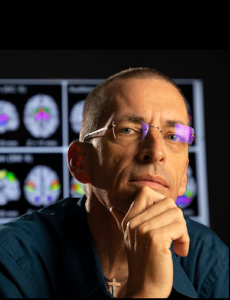
Dr. Calhoun is founding director of the tri-institutional Center for Translational Research in Neuroimaging and Data Science (TReNDS) where he holds appointments at Georgia State, Georgia Tech and Emory. He is the author of more than 1000 full journal articles. His work includes the development of flexible methods to analyze neuroimaging data including blind source separation, deep learning, multimodal fusion and genomics, neuroinformatics tools. Dr. Calhoun is a fellow of the Institute of Electrical and Electronic Engineers, The American Association for the Advancement of Science, The American Institute of Biomedical and Medical Engineers, The American College of Neuropsychopharmacology, The Organization for Human Brain Mapping (OHBM) and the International Society of Magnetic Resonance in Medicine. He currently serves on the IEEE BISP Technical Committee and is also a member of IEEE Data Science Initiative Steering Committee as well as the IEEE Brain Technical Committee.
The MCOS promotes rigor in research and resource sharing. We aim to hold MCOS every third Friday of the month, but is subject to change due to speaker availability.
Our next seminar will be held on April 19th, 2024 at 15:00 CET, 9:00am EST featuring Simon Eickhof, PhD who will discuss The many faces of brain connectivity.
Stay tuned for details in next month’s newsletter!
We are pleased to announce that OHBM 2024 will feature a symposium organized by members of the MCWG!

Organized by Débora Peretti and Arianna Sala, the symposium is entitled “Brain connectivity: ready for clinical application? An overview of current challenges and caveats” and will feature presentations from Simon Eickhoff, Christian Habeck, Alessandro Gozzi, and Débora Peretti. In this symposium we discuss some of the most pressing methodological considerations that still need to be addressed by neuroscientists in order to obtain robust connectivity markers for inference and prediction. Both statistical and biological considerations will be covered, on the grounds that not only prediction of phenotypes from activation/connectivity data, but also understanding the mechanisms underlying inter-individual connectivity differences, are necessary to obtain robust, generalizable topographic substrates. Finally, an overview of the translation of connectivity metrics into clinical practice will be presented. Date and time to be announced.
Members of the MCWG are co-organizing the 12th European Conference on Clinical Neuroimaging in March in Leipzig, featuring invited talks on molecular imaging, total-body PET, imaging in psychiatry and ATN concept in Alzheimer’s disease. Register now.
Please send us information about events related to brain connectivity and molecular connectivity that you wish to share with the community for consideration no later than the final day of each month using this form.
Please submit any news, including publications you would like highlighted or job listings related to brain connectivity and molecular connectivity that you would like to share with the community for consideration no later than the final day of each month using this form.
Each month, we will feature a member of the MCWG and inclide a brief Q&A!
This month we highlight Dr. Sharna Jamadar, member of the MCWG Steering Committee.
Dr. Sharna Jamadar is Associate Professor (Research) and NHMRC Emerging Leader Fellow at Monash Biomedical Imaging and Turner Institute for Brain and Mental Health.Sharna’s research is focused on understanding how our life experiences change our brains, and how this may confer resilience to the ageing process. She is particularly interested in studying the neural bases of cognitive control, and has explored the consequences of disruption of cognitive control in a number of conditions, including healthy ageing, psychosis (schizophrenia, bipolar disorder) and substance abuse. She also has an emerging interest in the neuroscience of parenthood and is supervising two student projects in this theme. Sharna is an expert in multimodal neuroimaging, and uses a number of imaging techniques to understand cognitive control, including positron emission tomography (PET), functional magnetic resonance imaging (fMRI), electroencephalography (EEG) and oculomotor measures (eye-tracking). Sharna’s team leads the development of simultaneous functional MRI-PET imaging in humans at the facility. Sharna’s team has developed novel MRI-PET measures that provide high resolution mapping of the function, structure, and metabolic efficiency of the brain. For the first time, these new techniques allow researchers to study task-related changes in brain function and metabolism with a temporal resolution below 20sec. This work will have substantial implications for our understanding of how the brain dynamically uses energy; and Sharna will use these new methods to understand how the metabolic efficiency of the brain changes across the lifespan.
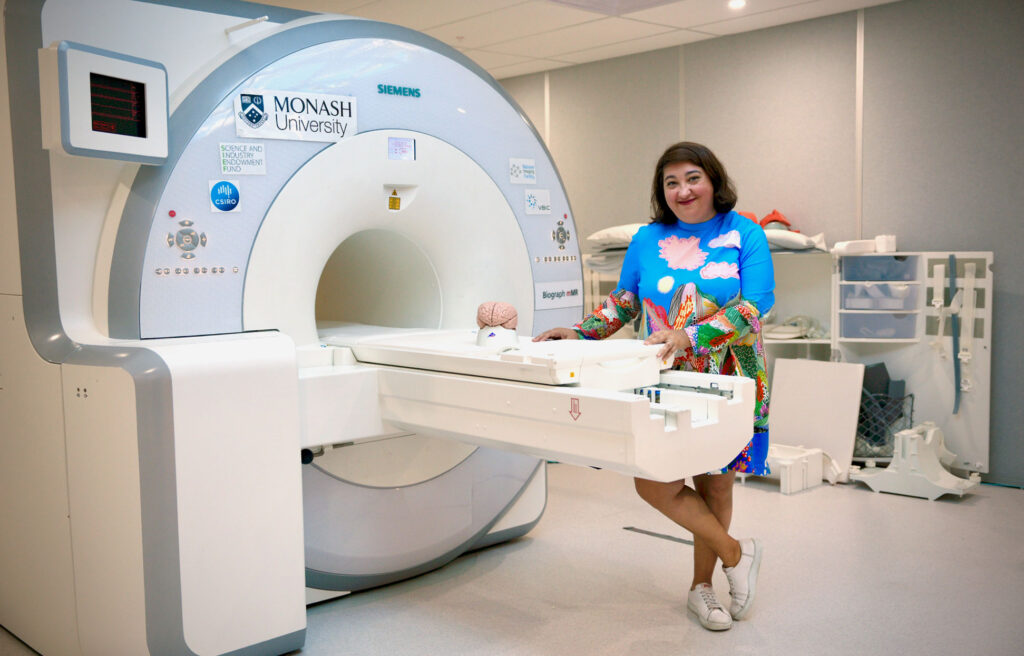
Dr. Sharna Jamadar has graciously responded to our feature questionnaire!
What sparked your interest in molecular imaging or led you to focus on research in molecular imaging?
I trained as a cognitive neuroscientist in EEG and fMRI, and at the time that I was doing my training (2005-2010), I (somewhat naively) thought of PET as a functional neuroimaging tool that had been superseded by fMRI. In terms of functional brain mapping and brain-cognition relationships, the vast majority of the work I was reading, and doing myself, was focused on electrophysiology and haemodynamics. From the beginning though, I always had a healthy dose of scepticism about what we can and can’t do with fMRI – you may remember a rather famous paper by Logothetis with that exact title.
In 2015 I returned to work after a year’s maternity leave, and this was a time of transition both personally and professionally. At that time, we were installing a new PET/MR scanner at our institute, and I was really excited about the possibilities this new technology was offering. In particular, I was intrigued by how FDG-PET can be considered a more direct and quantitative measure of neuronal function than fMRI. I was moving my research into the area of cognitive ageing, and this was exciting to me, as there are lots of challenges to using fMRI in older adults, particularly if we want to compare them to younger adults, which I did. I was particularly inspired by the Villien et al. 2014 paper in NeuroImage, with the proposed method for functional PET (fPET) for brain mapping. We noticed that their approach didn’t provide simultaneous task contrast for both fMRI and fPET, so our first pilot study was a simple replication and extension of that work to allow this. I’d never used PET before, let alone fPET, and this was a really fun time playing in the lab and figuring out this new method for measuring brain function. It was a great time – we tried lots of new things in the scanner, as well as with the data, collaborating across radiography, nuclear medicine technology, engineering, maths, and physics – with me the lowly neuroscientist trying to figure out what it all means!
As a follow-up to this work, I quickly shifted to considering how we might use PET to measure connectivity in the brain. The human brain mapping community had been really focused on resting connectivity for some time, and I’d done a bit of work in this area too. We’d just published a paper showing how the fMRI connectome is confounded by individual differences in haemoglobin in an older population, and so the idea that we might be able to get a less confounded measure of connectivity was really appealing. Of course, I was “scooped” back in the 1980s by Barry Horwitz and colleagues, as well as the greater PET community in the subsequent years. However, after reading the literature, I realised that the definition of connectivity used in PET was different to how I’d use it if I was looking at an EEG or fMRI measure. In other functional connectivity approaches (I use the term ‘functional connectivity’ in its broadest sense, as a measure that can be made using any functional neuroimaging approach, including EEG, fMRI, MEG, etc.), we correlate the timeseries of activity within subjects to estimate a connectome, whereas with PET the standard was an across-subject approach. So, we thought we’d try to use fPET to estimate a timeseries to correlate, in a similar way. We did this, and published what we think is the first ‘metabolic’ connectome that is estimated using within-subject methodology. The work was hard but rewarding, and we still have lots to learn about how to best process this data, and interpret it.
And it’s this interpretation that’s made me put my hand up and declare myself a diehard convert to molecular connectivity. I’ve focused exclusively on using FDG as a radiotracer, primarily because it’s easy to source, but also because of my early focus on neuronal activity. However, if you’re interested in human physiology, how can you go past the target that literally fuels the brain and body?! My group has subsequently shifted to focus on how individual differences in systemic glucose metabolic efficiency (insulin resistance) influences brain function, the metabolic connectome, and cognition. We’ve got some new results currently under review and about to be submitted that we’re really excited to share with the community in this space.
What is your role in the Molecular Connectivity Working Group and what have you been contributing to/working on with the Molecular Connectivity Working Group?
I’m involved as a Board Member, as well as a member for the symposium council. I’m excited at the opportunity to bring together international interdisciplinary experts in connectivity, to discuss how we can ‘speak the same language’ between the molecular connectivity and other functional connectivity disciplines.
In what ways do you imagine the impact of molecular connectivity will have in advancing our understanding of brain function?
I am really enthusiastic about the possibilities in this space to make important discoveries about brain function. To date, I don’t think the human brain imaging community has really capitalised on the strengths of PET and other modalities to measure molecular targets in vivo in the brain. As such, we have a narrow concept of brain function that we’ve derived from electrophysiology and haemodynamic approaches, that do not adequately take into account the range of molecular targets that we know are important for brain function. As a multimodal neuroimager, I’ve always been inspired by that famous cartoon of the man looking under the streetlamp for his keys. When a passer-by asks him where he lost his keys, he points to a place outside the light and says, ‘Over there, but the light is best over here’. We’re almost always using tools to answer questions that they’re not quite suited to answer. I like to imagine that each neuroimaging method sheds a little more light on the situation: the beams will probably overlap at some level, but also show us something new too. I’m hoping that with the development of the fPET approach, and a renewed focus on molecular connectivity, we will be able to shed new light on human brain function that we couldn’t have achieved with the other methods we have at our disposal.
One aspect that I am excited about, is the ability to use fPET and molecular connectivity with a range of radiotracers to measure dynamic brain activity. During my PhD, I was reading a lot about the role of different neurotransmitters in different cognitive processes, however, these ‘models’ were poorly specified, and had no direct measurements of the neurotransmitter targets to support them. With fPET and molecular connectivity, we can directly measure these targets and test these hypotheses. I think that these methodological advances together with the large improvements in PET detector technology means that we will be seeing a lot of new discoveries in the coming years about the molecular bases of cognition.

The MCWG is made up of four international and multidisciplinary councils dedicated to promoting molecular connectivity research via dissemination of methods, results, collaboration, and resource sharing (e.g. datasets, tools) within the scientific community. We encourage the neuroscientific community to take an integrative perspective in study of the brain connectome, where various methods including MRI-based techniques, electrophysiological tools, and molecular imaging advance our understanding of the brain. Please find fundamental questions outlined here: “Brain connectomics: time for a molecular imaging perspective?”
Our website can be found here. We also invite you to join the MCWG!
[MCWG] Molecular Connectivity Newsletter: February 2024

Hello!
We hope that you enjoyed our inaugural newsletter and wish to thank those that attended our first MCOS in January with Arianna Sala, PhD. We think it was a rousing success and appreciate the participation of everyone who was able to join! We welcome any feedback you may have! Please find the replay here and slides here. We hope to see you at our next talk for further discussion, please find the details below!
1. We are pleased to inform you that the second Molecular Connectivity Working Group Symposium is set for May 3-4 in Munich, Germany
Focusing on brain connectivity, the event features experts in molecular imaging, MRI and EEG. A dedicated session on standardized nomenclature will be exclusively for MCWG members and invited experts.
The symposium will take place in a hybrid format, the preliminary programme is attached: Preliminary Program MCWG Symposium, May 3-4, Munich, Germany.
Website and Registration (opening soon) can be found here. Please share with your colleagues, trainees, collaborators and on social media.
We look forward to seeing you in Munich!
2. We are also very pleased to announce the second talk in our Molecular Connectivity Online Series, ‘MCOS’, featuring Christian Habeck, PhD!
Date: February 23rd, 2024
Time: 15:00 CET, 9:00 EST, 22:00 CST
Title: Basic introduction to multivariate neuroimaging analysis – for nerds and novices
Please join us for this 30 minute presentation to be followed by discussion (~25 minutes).
Please register here.
Abstract: I will (1) go through some of the basics of PCA with toy simulations, (2) discuss some of the recent criticisms of PCA, and (3) show examples in fMRI data to demonstrate the power of multivariate compared to univariate analysis. I hope to convince the audience that an intelligent use of PCA is the best go-to initial pass at complex data, and also provides a good benchmark for more complicated and deeper learning architectures.
Some of the material in this presentation in late 2022: Multivariate analysis (PCA-SSM) of brain data: basic introduction and applications

I was originally trained as a Particle Physicist, but followed the great migration from Physics to the lifesciences after my PhD. (Date undisclosed!). After a brief stint of biophysical computational modeling at the Neurosciences Institute in San Diego, I came to brain imaging analytics with PET and fMRI at Columbia University where I have been ever since. I have conducted, developed, and popularized multivariate analysis frameworks and non-parametric statistics, relying on the trusty workhorse of PCA. My hope is that every practitioner -from seasoned analyst to novice- will get something out of my talk.
The MCOS will include seminars and tutorials to promote resource sharing and methodological rigor in the field. We will hold MCOS every third Friday of the month, subject to change due to speaker availability.
The next MCOS Seminar will be held on March 15th at 15:00 CET, 9:00am EST featuring Vince Calhoun. The title of his talk will be: “NeuroMark PET: Towards a fully automated PET ICA pipeline”. Stay tuned for details in next month’s newsletter!
Members of the MCWG are co-organizing the 12th European Conference on Clinical Neuroimaging in March in Leipzig, featuring invited talks on molecular imaging, total-body PET, imaging in psychiatry and ATN concept in Alzheimer’s disease. Register now to benefit from the Early-Bird-Rates (before Feb 22nd).
Please send us information about events related to brain connectivity and molecular connectivity that you wish to share with the community for consideration no later than the final day of each month using this form.
Please submit any news, including publications you would like highlighted or job listings related to brain connectivity and molecular connectivity that you would like to share with the community for consideration no later than the final day of each month using this form.
Each month, we will feature a member of the MCWG and have a brief Q&A!
This month please enjoy our highlight of Dr. Silvia Paola Caminiti, member of the MCWG Steering Committee.

Dr. Silvia Paola Caminiti is an Assistant Professor at the Department of Brain and Behavioral Sciences at the University of Pavia in Italy. With a background in neuroimaging and neuroscience, Dr. Caminiti is dedicated to advancing our understanding of the intricacies of the brain and its functioning. Dr. Caminiti’s primary research focus revolves around aging and neurodegenerative diseases. The goal of her research program is to examine selective neuronal vulnerability in Alzheimer’s (AD) and Parkinson’s disease (PD) using multimodal neuroimaging including positron emission tomography (PET) and magnetic resonance imaging (MRI). One of her projects aims to evaluate the dynamical connectivity changes affecting the course of AD. By employing advanced technical and computational methods, she passionately seeks to uncover the vulnerabilities of the brain, providing valuable insights into diverse clinical phenotypes.
Dr. Caminiti has graciously responded to our feature questionnaire below!
What is your role in the Molecular Connectivity Working Group and what have you been contributing to/working on with the Molecular Connectivity Working Group?
I’m currently a member of the steering committee for the Molecular Connectivity Working Group, currently serving as the Chair of the Symposium Council. My primary responsibility involves organizing – with the invaluable support of the other Council members – the second edition of the MCWG Symposium titled “Molecular Imaging of Brain Connectivity: Towards Standardized Nomenclature.” This event will be held in Munich on the 3rd and 4th of May 2024. I trust that all of you will thoroughly enjoy the event!
In what ways do you imagine the impact of molecular connectivity will have in advancing our understanding of brain function?
Brain connectivity can be estimated in different ways using PET data. Molecular connectivity provides insights into the intricate molecular mechanisms underlying neuronal processes. For example, molecular imaging allows us to specifically study chemical synapses, which are the predominant mode of signaling in the human brain. The study of brain communication at the molecular level is therefore a necessary step in advancing our understanding of brain connectomics. Moreover, the development of new tracers targeting specific biological substrates could provide further insights into the mechanisms underlying brain connectivity.
What do you think are the most important challenges in current brain connectivity research / what unsolved/underappreciated issues should the community tackle to advance the field?
In my opinion, the most challenging task in the field of brain connectivity research – in the era where a large amount of multi-modal data have been collected – rigorous pipelines of data analyses are essential. It’s crucial to have consistency in data collection and analysis methodologies to compare results across studies and to integrate across-modality evidence. The reliability and reproducibility of findings in the field can be enhanced by creating standardized protocols based on experimental design, imaging techniques, and data processing.
What scientist or scientific achievement do you most admire?
This is a difficult question because I have different favourite scientists and achievements. However, as I am Italian and a woman, Rita Levi Montalcini was by sure my greatest inspiration. I admire her tenacity and dedication to scientific research. The resilience she showed in the face of difficulties, coupled with her enthusiasm to discover new things with curiosity, without being influenced by preconceived ideas, is, in my opinion, a fundamental quality for a good scientist.

The MCWG is made up of four international and multidisciplinary councils dedicated to promoting molecular connectivity research via dissemination of methods, results, collaboration, and resource sharing (e.g. datasets, tools) within the scientific community. We encourage the neuroscientific community to take an integrative perspective in study of the brain connectome, where various methods including MRI-based techniques, electrophysiological tools, and molecular imaging advance our understanding of the brain. Please find fundamental questions outlined here: “Brain connectomics: time for a molecular imaging perspective?”
Our website can be found here. We also invite you to join the MCWG!
[MCWG] Molecular Connectivity Newsletter: January 2024

Hello!
Happy New Year! We are happy to share this inaugural newsletter from the Molecular Connectivity Working Group (MCWG)! We are reaching out to you as you have previously shown interest in the MCWG and we hope that this will be a welcome resource for keeping you informed about future activities and initiatives!
1. We are very pleased to announce the inaugural talk in our Molecular Connectivity Online Series, “MCOS”!
Date: January 19th, 2024
Time: 15:00 CET, 9:00 EST
Title: Brain connectomics: Time for a molecular imaging perspective?
The seminar will comprise a 30 minute presentation followed by discussion (~25 minutes).
Please register here.
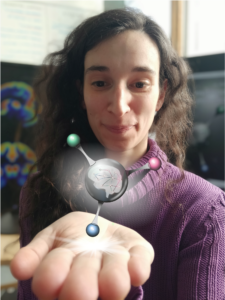
Our first talk will feature Arianna Sala, PhD, from Liège University in Belgium, discussing the basics of molecular connectivity. The paper can be found here: “Brain connectomics: time for a molecular imaging perspective?” Arianna’s work aims to better understand disorders of consciousness using a multi-level molecular neuroimaging assessment to investigate patterns of hypometabolism and brain (dis)connectivity.
The MCOS will include seminars and tutorials to promote resource sharing and methodological rigor in the field. We will hold MCOS every third Friday of the month, subject to change due to speaker availability.
Case in point, our seminar for February will be held on 23 February at 15:00 CET, 9:00am EST featuring Chris Habeck, PhD who will discuss Basic introduction to multivariate neuroimaging analysis – for nerds and novices. Stay tuned for next month’s newsletter!
2. New Logo!
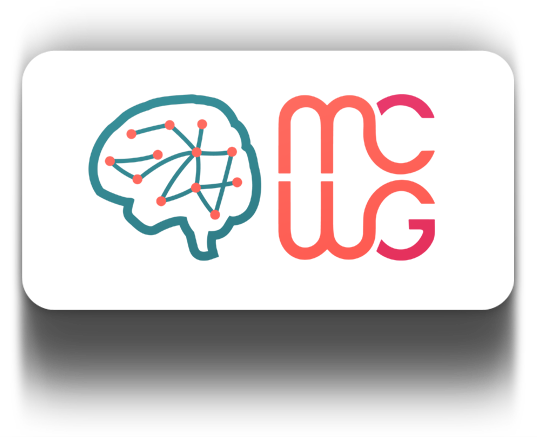
MCWG would like to also announce our new logo, created by Michael Rullmann, PhD, member of the Outreach Council. The curved, fresh and almost symmetrical MCWG wordmark echoes the iconic brain illustration of the MCWG cover image in Trends in Cognitive Sciences.
Members of the MCWG are (co-)organizing the 12th European Conference on Clinical Neuroimaging in March in Leipzig, featuring invited talks on molecular imaging, total-body PET, imaging in psychiatry and ATN concept in Alzheimer’s disease. Register now to benefit from the Early-Bird-Rates (before Feb 22nd).
Please send us information about events related to brain connectivity and molecular connectivity that you wish to share with the community for consideration no later than the final day of each month using this form.
Additionally, we would like to share news that MCWG members Silvia Paola Caminiti, Gabriel Gonzales-Escamilla and Arianna Sala served as editors for a recently published Frontiers special issue with papers from additional MCWG members in relation to molecular connectivity found here: Imaging Brain Molecular Connectivity in Health and Disease | Frontiers Research Topic; Editorial: Imaging brain molecular connectivity in health and disease.
Please submit any news, including publications you would like highlighted or job listings related to brain connectivity and molecular connectivity that you would like to share with the community for consideration no later than the final day of each month using this form.
Each month, we will feature a member of the MCWG and have a brief Q&A!
This month please enjoy our highlight of Dr. Simon Eickhoff, member of the MCWG Advisory Board.


Simon Eickhoff is a full professor and chair of the Institute for Systems Neuroscience at the Heinrich-Heine University in Düsseldorf and the director of the Institute of Neuroscience and Medicine (INM-7, Brain and Behavior) at the Forschungszentrum Jülich. He is furthermore a visiting professor at the Chinese Academy of Science Institute of Automation. Working at the interface between neuroanatomy, data-science and brain medicine, he aims to obtain a more detailed characterization of the organization of the human brain and its inter-individual variability in order to better understand its changes in advanced age as well as neurological and psychiatric disorders. This goal is pursued by the development and application of novel analysis tools and approaches for large-scale, multi-modal analysis of brain structure, function and connectivity as well as by machine-learning for single subject prediction of cognitive and socio-affective traits and ultimately precision medicine.
Dr. Eickhoff has graciously responded to our feature questionnaire:
The following three questions were answered in combination.
What is your role in the Molecular Connectivity Working Group and what have you been contributing to/working on with the Molecular Connectivity Working Group?
What do you think are the most important challenges in current brain connectivity research and what unsolved/underappreciated issues should the community tackle to advance the field?
In what ways do you imagine the impact of molecular connectivity will have in advancing our understanding of brain function?
For me personally, these questions are all very closely related. There is no such thing as “the” connectivity between brain areas or “the connectome” of the brain. Rather, each method for assessing brain connectivity can reveal distinct aspects of the brain’s network architecture, its inter-individual variability and ultimately relation to neurological and psychiatric disorders. Unfortunately, each method also comes with its inherent limitations and biases. Consequently, I am deeply convinced that the integration, comparison and combination of different aspects of brain connectivity is the key to get better insights into neurobiology and pathophysiology. And molecular connectivity certainly provides a very distinct layer of information that can provide extremely valuable insight into mechanisms not accessible through any other method. Looking into the respective relationships in health and disease and ultimately using multi-modal information for understanding and predicting behavioural or clinical phenotypes will be the main focus of my work within the MCWG and beyond.
What is your favorite mentoring memory? This can be in relation to the impact of a mentor on you or a memorable story about your impact on a mentee…
It’s not so much a specific moment or event, but what I am most happy about is that we as an institute not only managed the Covid-pandemic but actually developed a new way of working and communicating during that time combining massive flexibility with close interaction. Mentoring people, including faculty, through this process and seeing how nice it works every day is amazing. But observing that it allows many young parents to combine work and family life is my favourite.
What scientist or scientific achievement do you most admire?
Hard to pick any individual one among the pioneers in (clinical) neuroscience during the late 19th century. It is simply unbelievable how much of their basic concepts, from brain organization to clinical nosology is still foundational to our current work, in particular considering the limited methodologies at their disposal. Teaches you a lot about the value of careful investigation and critical conceptualization.
Representative Publications

The MCWG is made up of four international and multidisciplinary councils dedicated to promoting molecular connectivity research via dissemination of methods, results, collaboration, and resource sharing (e.g. datasets, tools) within the scientific community. We encourage the neuroscientific community to take an integrative perspective in study of the brain connectome, where various methods including MRI-based techniques, electrophysiological tools, and molecular imaging advance our understanding of the brain. Please find fundamental questions outlined here: “Brain connectomics: time for a molecular imaging perspective?”